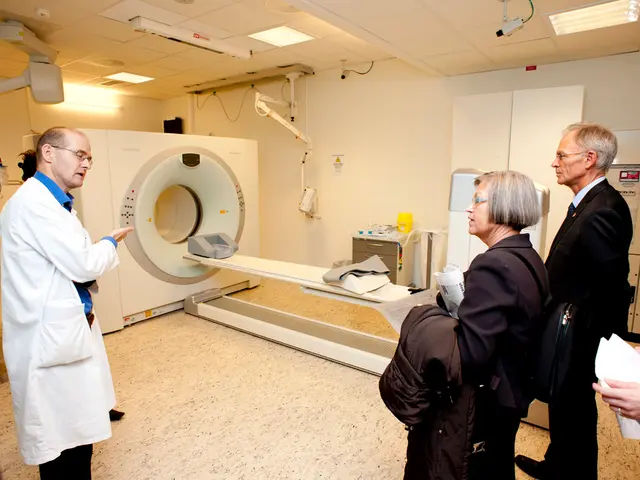Kris Jenner Undergoes Classic Plastic Surgery Procedures: A Discussion on Timeless Approaches
In the past week, Page Six sparked a frenzy with their report that "Dr. Steven Levine" was behind Kris Jenner's recent facial refresh, making the plastic surgeon even more famous than he likely wished for. (Known for staying out of the spotlight, Dr. Levine, a board-certified surgeon in NYC, hardly gives interviews.)
While some may question the reliability of Page Six's sources, the field of plastic surgery seems to accept it as fact. (People soon followed up with their own article confirming Dr. Levine as Jenner's surgeon.) Presuming the report is true, Jenner didn't get a deep plane facelift, as many speculated on social media, but a traditional SMAS facelift, which is Dr. Levine's specialty.
The SMAS (Superficial Musculoaponeurotic System) is the target of every modern facelift. This fibrous layer of connective tissue envelops the muscles of the face. There are several variations of SMAS lifts, each addressing the SMAS differently, but Dr. Levine reportedly performs a lateral SMASectomy, which involves removing a strip of the SMAS and suturing the edges back together. He often combines this with a deep neck lift to sculpt fat pads, salivary glands, and digastric muscles.
In recent years, there's been a surge of hype on social media about deep plane facelifts, while the SMAS lift has received little attention. In reality, most American plastic surgeons perform some version of an SMAS lift. Elizabeth Chance, a facial plastic surgeon, recently filmed educational Instagram stories discussing the differences between Dr. Levine's SMAS lift and the extended deep plane facelift she performs.
Chance explained that patients who have multiple, low-duration facelifts over the years will exposed the platysma muscle and any previous scarring. This is because the subcutaneous fat of the neck gets thinner with each intervention, leaving the dynamic platysma vulnerable.
SMAS lifts vary greatly, and it's challenging to generalize them. According to Pierce Janssen, an aesthetic surgery fellow, SMAS techniques can be divided into two main categories: extended techniques, which dissect under the muscle and release the facial ligaments, and techniques that do not go under the muscle or touch the ligaments. All methods can yield excellent results if performed by skilled, experienced surgeons.
Plastic surgeon Dino Elyassnia emphasized that any good facelift involves opening the skin and working on the SMAS. He reminded us that there's no published study showing that a deep plane facelift lasts longer or looks better than an SMAS lift. When surgeons compared techniques in the '90s, the results all looked similar.
In essence, both the SMAS facelift and the deep plane facelift have their advantages and are appropriate for different cases. The SMAS facelift offers reliable, natural-looking results for a wide range of patients, with less risk and a shorter recovery time, making it the preferred choice for many surgeons and patients. The deep plane facelift, while effective for more advanced aging, is generally reserved for patients with significant tissue descent and is performed by surgeons with advanced expertise.
In the realm of health-and-wellness, discussions about different facial rejuvenation techniques such as the SMAS facelift and the deep plane facelift have emerged, led by renowned plastic surgeons like Dr. Steven Levine and Elizabeth Chance. Meanwhile, entertainment and celebrities continue to influence public perception as Kris Jenner's recent facial refresh has sparked debates over the effectiveness of these procedures.








